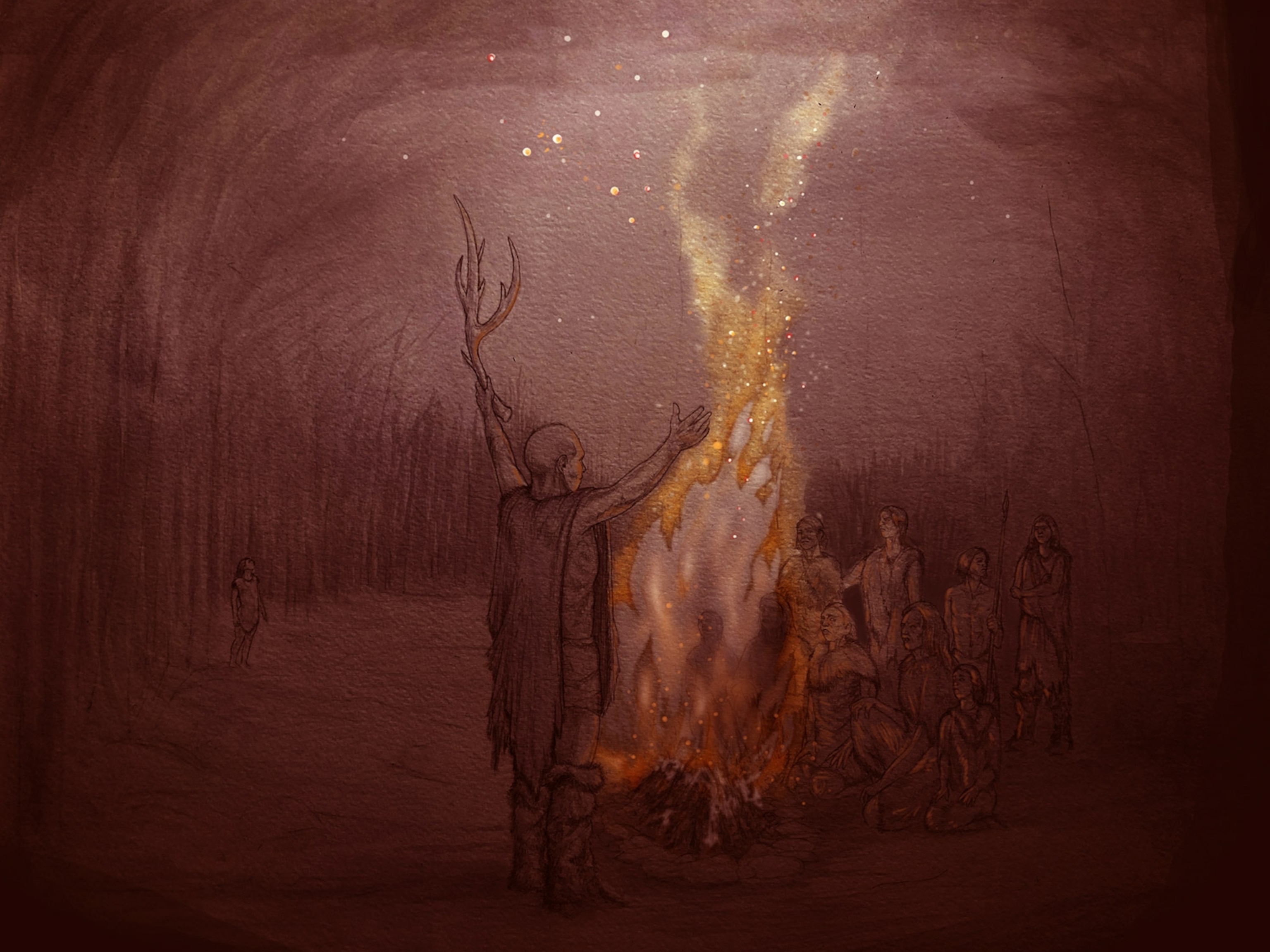
Return of the Neanderthals
Should scientists seek to clone our ancient hominid cousins?
For now, the Neanderthal genome is an abstract string of billions of DNA letters stored in computer databases. But it naturally sparks the imagination: Could scientists use that genetic blueprint to create neo-Neanderthals in the flesh?
In the not-so-distant future, advances in genetic engineering might enable that feat, experts say. But whether such a resurrection should happen is another story.
Since the 1996 birth of Dolly the sheep, the world's first cloned mammal, scientists have greatly expanded and improved on cloning techniques. They have cloned dogs, cats, rats, pigs, and cows, among other species. In 2003, researchers in Spain were the first to bring back an extinct species—the Pyrenean ibex, a wild mountain goat also called a bucardo—though the clone only lived for a few minutes.
All of these examples relied on a technique called nuclear transfer. Starting with an intact cell (fresh or frozen) of the animal they'd like to clone, scientists first remove the nucleus, where DNA resides, and insert it into a hollowed-out egg cell of the same or a related species. This hybrid egg is then implanted into the uterus of a female surrogate for gestation, and voilà: The surrogate gives birth to a clone.
But there are no intact Neanderthal cells—far from it. Decoding the Neanderthal genome meant piecing together many DNA fragments painstakingly extracted from 40,000-year-old bones. So how could cloning be possible?
In his 2012 book Regenesis, Harvard geneticist George Church proposes a different approach for cloning extinct animals whose genome has been sequenced. It starts with a healthy cell of a closely related species—cloning a Neanderthal, for example, could start with a stem cell from a modern human. Using new tricks of genetic engineering, researchers could make adjustments to the DNA in the human cell so it matches the code of the Neanderthal.
That's more difficult than it sounds, as there are millions of spots in the genome that are different in modern humans and Neanderthals. Church points to a new technique called CRISPR that makes it possible to edit multiple sites in the genome at once. A paper describing the process was published in Science in January. With that publication, "genome engineering of mammalian cells just took a big step forward," he says.
Though the techniques aren't sophisticated or cheap enough yet to recreate a Neanderthal genome, Church thinks the idea is plausible. "Going from engineered cells to whole organism has been especially well established in mice, and [there's] no obvious reason why it would fail in other mammals."
Ethical Questions
If a human cell could be Neanderthalized, it would be implanted into the womb of a surrogate mother, either a woman or a chimp, and then develop into a fetus. But this step, too, would be extremely challenging. "We know from cloning experience that there's a very high failure rate," says geneticist James Noonan of Yale University.

In the case of the Pyrenean ibex, for example, the Spanish scientists created 439 eggs containing the extinct species' nuclei, but only 57 developed into embryos. Five survived the full term of pregnancy, and just one was born. Numbers like that would likely inflict a heavy emotional and physical toll on human surrogates.
"What's most likely to happen is you're going to get really sick or lethal mutations. You're going to get a lot of dead proto-Neanderthals," Noonan says.
Even if a clone did survive, the ethical dilemmas of raising a Neanderthal would be complicated. In some ways, Neanderthals were similar to modern humans. They used tools and created art, and they likely had the mental capacity for language and abstract thinking.
In other respects, though, Neanderthals were quite different. They went extinct before the agricultural revolution, so they would probably have difficulty stomaching our modern diet, heavy in grains and dairy. Their physical appearance—short and stocky, with big heads and strong muscles—would make them stick out, too.
"I can imagine there would be a serious emotional toll to be raised as a Neanderthal kid with a bunch of non-Neanderthal people," says Trenton Holliday, an anthropologist at Tulane University.
For example, if the Neanderthal child was far stronger than modern humans, he or she might be excluded from playing sports teams, Holliday says. If intellectually disabled—or intellectually gifted—he or she might be put into isolating educational programs.
Church agrees that these ethical issues are important to consider in any cloning project. "For any species, we want to maximize the chances that they will be born and live physically and socially healthy lives," he says.
What's the Point?
Some scientists wonder whether there is any valid scientific reason to bring back a Neanderthal clone.
"You can have a Neanderthal genome growing in a human mother, but of course the environment and development, and also the educational environment and cognitive stimuli surrounding anyone being born these days would be totally different from a Paleolithic environment," says Carles Lalueza-Fox, a researcher at the Institute of Evolutionary Biology in Barcelona.
Rather than bring back a whole Neanderthal, some scientists say it would be more useful—and ethically palatable—to focus on making a few of its cells.
This approach could uncover biological differences between Neanderthals and humans, allowing anthropologists to better understand the two species' divergent evolutionary histories. A cellular comparison might even lead to new insights on modern diseases.
"If you had said to me ten years ago that we're going to learn something about Neanderthals and it's going to affect the health of humans living now, I would not have believed that," says John Hawks, an anthropologist at the University of Wisconsin-Madison.
But the Neanderthal genome changed everything.
In 2010, after scouring Neanderthal bones found in a Croatian cave for bits of viable genetic material, scientists released the first draft of our ancient cousin's genome. It rocked the field of anthropology for revealing, among other things, that some of these stocky, big-headed hominids had interbred with the ancestors of modern humans.
Neanderthals' climate, diet, and disease exposures were not the same as those of our ancestors, and left different adaptive marks on their genome. And yet Neanderthals are far more similar to modern humans than the animals commonly used to study disease, such as fruit flies and rodents.
"There are issues that humans have now, where it's very plausible that Neanderthal biology might actually show us something," Hawks says. "Our knowledge of the evolutionary process could guide us toward possible treatments."
For example, a 2011 study found that modern humans carry variants in genes related to the immune system that Neanderthals did not. To learn more about the biological consequences of these genetic differences, Noonan says, "You might take a human immune cell and make it more Neanderthal-like, and then see whether or not it has the same kind of capacity to respond to pathogens."
Hawks agrees. He points out that modern humans carry genetic mutations linked to autoimmune disease and celiac disease—a painful gastrointestinal condition that stems from an immune reaction to gluten—that the Neanderthals didn't carry. Hawks even suggests that comparing Neanderthal and human cells could help researchers fight modern ailments.
"We're looking at an ancient population that had thick, dense bones and strong muscles," Hawks says. "If you could find some way to tweak the human biology in a way to make it more Neanderthal-like, that might treat osteoporosis and muscle wasting."
For now, the technology for studying Neanderthal biology remains out of reach. But many experts predict that it's only a matter of time. "My own over-under number is 30 years," Hawks says.







